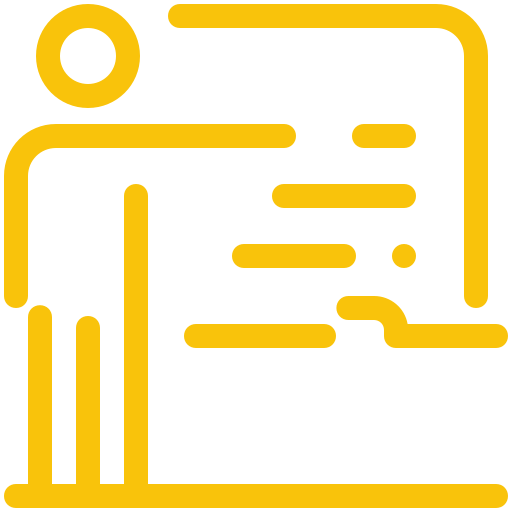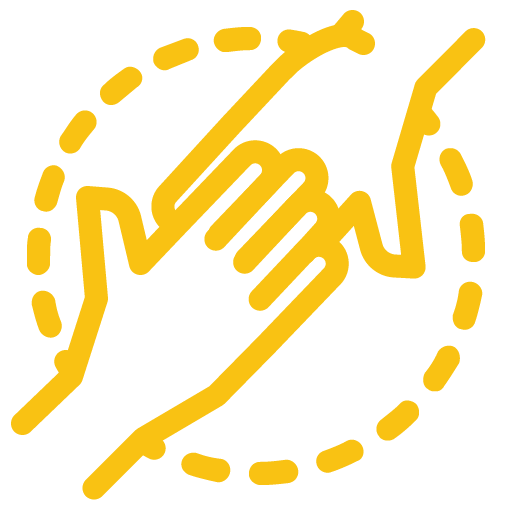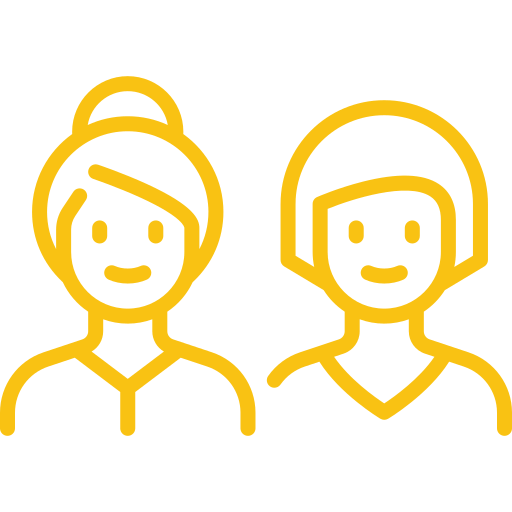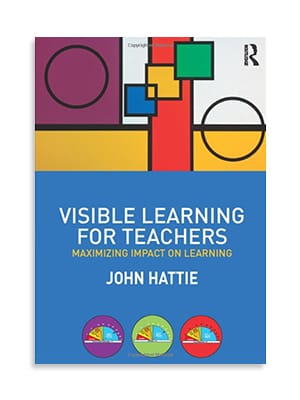Ever wondered why some classrooms buzz with engagement while others struggle to keep eyes open? The secret might just lie in the project method of teaching. The concept has been around awhile; and it’s a proven strategy that immerses students in real-world challenges, encouraging them to think critically and collaborate effectively. By weaving this technique into your lessons, you’re not only imparting knowledge but also equipping young minds with essential life skills. So, let’s dive into how swapping out old-school teaching for project-based learning could totally shake up what success looks like in our classrooms.
What is the Project Method of Teaching?
The project method of teaching is a game-changer in education. It’s a teaching approach that gets students actively involved in their own learning. There’s a wide range of methods, often requiring communication skills and group work. Not always though, sometimes you’ll have students learn on their own.
Definition of project method
So what exactly is this project-based learning all about? In a nutshell, it’s a teaching technique where students gain knowledge and skills by working on a project for an extended period of time. They investigate and respond to a complex question, problem, or challenge. It’s a hands-on, minds-on approach that makes learning come alive.
Key characteristics of project-based learning
The project method has some key features that set it apart from traditional teaching methods:
- Students work on a project over an extended period of time
- Projects are centered around a meaningful problem to solve or a question to answer
- Students engage in a rigorous process of asking questions, using resources, and developing answers
- Learning happens in a social context, with students collaborating with each other and with their teacher
- Students have some choice in the project and take ownership of their learning
Benefits of using the project approach in teaching
The project teaching method offers a ton of benefits for students. It helps students develop critical thinking, problem-solving, and collaboration skills. They learn how to communicate effectively, manage their time, and take responsibility for their own learning. Plus, project-based teaching makes learning relevant and engaging. Students are motivated to learn because they see how their knowledge and skills can be applied in the real world.
Steps in Implementing the Project Method of Teaching
Ready to dive into project teaching? Here’s a step-by-step guide to get you started.
Selecting an appropriate project
The first step is to choose a project that aligns with your learning goals and engages your students. Consider their interests, skills, and the resources available. The project should be challenging but achievable, with clear objectives and outcomes. It should also have real-world relevance and allow for student choice and creativity. Once you’ve selected a project, it’s time to plan and organize. Break the project down into manageable tasks and create a timeline. Determine what resources and materials are needed, and how students will be assessed. Establish clear expectations and guidelines for student participation and collaboration.
Executing the project
Now it’s time for students to dive into the project work. As the teacher, your role is to guide and support them through the process. Provide scaffolding and feedback as needed, but allow students to take ownership of their learning. Encourage them to ask questions, take risks, and learn from their mistakes.
Evaluating and reflecting on the project
The final step is to evaluate the project and reflect on the learning experiences. Assess student learning using a variety of methods, such as presentations, portfolios, or self-assessments. Encourage students to reflect on their own learning and growth, and provide opportunities for them to share their work with others. Use the feedback and insights gained to inform future project-based teaching efforts.
Types of Project Methods in Teaching
There are different types of project methods you can use in your classroom, each with its own unique benefits and challenges. In an individual project, each student works independently on their own project. This allows for personalized learning and skill development, but may lack the benefits of collaboration and peer feedback.
Collaborative group projects
Group projects involve students working together in teams to complete a project. This fosters communication, teamwork, and problem-solving skills. However, it can be challenging to ensure equal participation and assess individual contributions.
“The group project method of teaching is a practical approach to project-based learning that may assist students in mastering key skills and course information. Teachers may prepare pupils for 21st-century success by encouraging cooperation and teamwork.”
Problem-based projects
Problem-based projects challenge students to solve a real-world problem or answer a complex question. This type of project promotes critical thinking, creativity, and application of knowledge. It can be a highly engaging and motivating learning project.
Interdisciplinary projects
Interdisciplinary projects integrate multiple subjects and disciplines, allowing students to make connections and see the relevance of their learning. This complex method requires careful planning and collaboration among teachers, but can lead to deep and meaningful learning experiences.
Advantages of the Project Method in Teaching
Why choose the project method of teaching? Here are just a few of the many advantages:
Develops problem-solving skills
Project-based teaching challenges students to solve problems and find creative solutions. They learn how to break down complex issues, gather and analyze information, and make informed decisions. These are valuable skills that will serve them well in any future career or endeavor.
Enhances critical thinking abilities
The project approach encourages students to think deeply and critically about the world around them. They learn to ask questions, evaluate evidence, and draw conclusions. By engaging in this type of active learning, students develop critical thinking skills that will benefit them throughout their lives.
Promotes active learning and engagement
Let’s face it – traditional lectures and worksheets can be boring. But project-based learning is an engaging approach that gets students excited about learning. They are actively involved in the process, taking ownership of their own education. This leads to higher levels of motivation, participation, and retention.
Prepares students for real-world challenges
The project method gives students hands-on experience with real-world challenges. They learn how to apply their knowledge and skills to authentic situations, just like they will need to do in their future careers. By working on projects that have relevance and meaning, students see the value of their education and are better prepared for success beyond the classroom.
Dive into project-based learning to make education engaging and relevant. This hands-on approach helps students develop crucial skills like critical thinking, problem-solving, and teamwork by tackling real-world challenges. Get ready to see motivation and participation soar as students take charge of their learning journey.
Challenges and Solutions in Implementing the Project Method
Even though there are many good things about the project teaching method, there are also some problems teachers may encounter when trying to use it. These barriers make incorporating project-based learning into the classroom seem intimidating or unattainable.
Time management and planning
One of the biggest challenges is time management. Planning and executing a project can take a lot of time, which can be hard to fit into a busy curriculum. Teachers may struggle to cover all the required subject matter while also dedicating enough time to the project. To overcome this, teachers can break the project into smaller, manageable tasks and set clear deadlines. They can also integrate the project into multiple academic areas, maximizing the learning benefits while minimizing the time impact. In group projects, it can be difficult to assess each student’s individual contributions. Some students may take on more work than others, while some may struggle to participate at all. To address this, teachers can use a variety of assessment strategies, such as self-evaluations, peer evaluations, and individual reflections. Everyone in the group gets their own piece of the pie to work on, making sure everyone’s pulling their weight equally.
Ensuring alignment with curriculum standards
Another challenge is ensuring that the project aligns with curriculum standards. With so much focus on the project itself, it can be easy to lose sight of the bigger picture. To keep things on track, teachers should start with the end in mind. They should identify the key learning objectives and design the project around those goals. Touching base regularly and evaluating progress ensures that students are hitting their marks.
Providing adequate resources and support
Finally, project-based learning requires adequate resources and support. Students may need access to technology, materials, or expertise that the school doesn’t readily provide. Teachers can overcome this by getting creative with the resources they have, seeking out community partnerships, or applying for grants. They can also provide scaffolding and support throughout the project to ensure that students have what they need to succeed. By proactively addressing these challenges, teachers can successfully implement the project method and give their students a rich, engaging learning experience. Sure, it might need a bit more elbow grease and planning on your part, but believe me, the rewards are absolutely worth the hustle.
The Role of the Teacher in the Project Method
In the project-based teaching method, the teacher’s role is less about lecturing and more about guiding and facilitating. This student-focused strategy requires teachers to step back and let students take the lead. Teachers have shifted from being the only source of knowledge to guiding stars, offering a framework and encouragement as students embark on their projects. They help students develop the skills they need to be self-directed learners, such as goal-setting, time management, and problem-solving. Teachers also guide students through the learning process, asking questions, providing feedback, and helping them reflect on their progress. They create a safe, supportive environment where students feel comfortable taking risks and learning from their mistakes.
Providing feedback and support
Throughout the project, teachers provide regular feedback and support to help students stay on track and achieve their goals. They use formative assessments to gauge student understanding and adjust their instruction as needed. Teachers also provide emotional support, encouraging students when they face challenges and celebrating their successes. They encourage a mindset aimed at growth, highlighting the importance of hard work and progress over just having natural talent.
Encouraging student autonomy and ownership
One of the key benefits of the project method is that it gives students a sense of ownership over their learning. Teachers encourage this by giving students choice and voice in the project process. Here, students get the freedom to pick their own subjects, define what success looks like for them, and choose how they’ll show off what they’ve learned. They also give students responsibility for managing their own time and resources, with guidance and support as needed. By taking on this facilitator role, teachers empower students to be active, engaged learners who are invested in their own growth and development. It’s a big shift from traditional teaching methods, but it can lead to deeper, more meaningful learning experiences.
Assessing Learning Outcomes in Project-Based Teaching
Assessing student learning in project-based teaching can be a challenge, as it often involves a complex mix of skills and knowledge. However, with the right strategies in place, teachers can effectively evaluate student progress and ensure that they are meeting the desired learning outcomes.
Formative assessment strategies
Formative assessments are ongoing assessments that provide feedback to students and teachers throughout the learning process. In project-based learning, formative assessments can take many forms, such as:
- Progress check-ins and conferences
- Peer feedback and critique sessions
- Self-evaluations and reflections
- Rough drafts and works-in-progress
These assessments help teachers identify areas where students may need additional support or guidance, and allow students to course-correct before the final product is due. Summative assessments are used to evaluate student learning at the end of a project or unit. In project-based learning, summative assessments often take the form of a final product, presentation, or performance. To assess these final products, teachers can use rubrics that outline the criteria for success. These rubrics should be shared with students at the beginning of the project, so they know what is expected of them. Teachers can also use other summative assessment methods, such as written reflections, exams, or portfolios, to evaluate student learning in specific areas.
Evaluating individual and group performance
When tackling group projects, it’s just as crucial to take a close look at how each person is doing as it is to see how the team works together. By mixing it up with self-reviews, getting feedback from classmates, and keeping an eye out themselves, teachers can really get the full picture of what each student brings to the table and how they’re growing. They can also assess group dynamics and collaboration skills, such as communication, problem-solving, and conflict resolution. These skills are essential for success in the 21st century workplace, and project-based learning offers chances for students to develop them in a real-world context. By using a variety of assessment strategies and tools, teachers can get a comprehensive understanding of student learning in project-based teaching. They can also involve students in the assessment process, giving them ownership over their own learning and helping them develop important metacognitive skills.
Integrating Technology in Project-Based Learning
Technology has become an integral part of modern education, and project-based learning is no exception. By integrating technology into projects, teachers can enhance student learning, foster collaboration and creativity, and prepare students for the digital world beyond the classroom. One great perk of weaving technology into project-based learning is it makes teaming up and chatting with folks, both in the classroom and beyond its walls, super easy. Students can use digital tools like Google Docs, Trello, or Slack to work together on projects, share ideas, and give feedback. They can also use video conferencing tools like Zoom or Skype to connect with experts or peers from around the world, expanding their learning beyond the walls of the classroom.
Leveraging online resources for research and exploration
The internet offers a vast array of resources for students to explore and learn from. In project-based learning, students can use online databases, educational websites, and multimedia resources to conduct research and gather information for their projects. Teachers have the power to lead students through the maze of online information, teaching them how to spot trustworthy sources and build those crucial digital literacy skills along the way.
Incorporating multimedia elements in project presentations
Technology also allows students to create engaging, multimedia presentations to showcase their learning. They can use tools like PowerPoint, Prezi, or Adobe Spark to create visually appealing presentations that incorporate text, images, videos, and interactive elements. By incorporating multimedia elements, students can communicate their ideas in creative and compelling ways, and develop important 21st century skills like digital storytelling and media literacy. Of course, integrating technology into project-based learning requires careful planning and consideration. Teachers need to ensure that the technology is purposeful and aligned with the learning objectives, and that students have the necessary skills and support to use it effectively. When we nail it, technology becomes an awesome ally in project-based learning, giving students a leg up as they step into the digital future. It can open up new possibilities for collaboration, creativity, and discovery, and help students develop the skills they need to thrive in a rapidly changing world.
Key Takeaway:
Overcoming challenges in project-based learning, like time management and individual assessment, requires creative strategies such as breaking projects into tasks and using varied assessments. Teachers play a crucial role by guiding students and fostering autonomy, while integrating technology enhances collaboration and creativity.
FAQs in Relation to Project Method of Teaching
What are examples of project methods?
Examples of project methods include creating a mini ecosystem, designing an app, or crafting a documentary. Each of these activities taps into creativity and critical thinking.
What is the project-based method of teaching?
The project-based method of teaching is an approach that encourages students to dive deep into real-world problems. This fosters hands-on learning and collaboration skills in the process.
What is the project approach to teaching?
The project approach to teaching centers on student-driven exploration of complex topics. It blends research with practical application to promote a deeper understanding of the subject matter.
What are the advantages of the project method?
The project method offers several advantages. Kids learn by doing, which boosts problem-solving skills and teamwork abilities. Additionally, this method makes lessons more memorable than traditional lectures.
Conclusion
So there we have it – a journey through the dynamic world of the project method of teaching. It’s clear this isn’t about handing out assignments for the sake of busywork; rather, it’s about crafting meaningful experiences where every challenge is an opportunity for growth. From fostering critical thinking skills to nurturing collaboration among peers, this approach brings education alive, making each lesson resonate well beyond classroom walls. Remember, at its heart, successful education is all about sparking curiosity and empowering learners to pursue their questions – something that sits right at the core of what makes the project method so effective.
If you’re looking for more learning strategies or ideas, consider taking one of our courses at MTI. Each class is developed by a real classroom teacher, designed to help real classroom teachers.

























